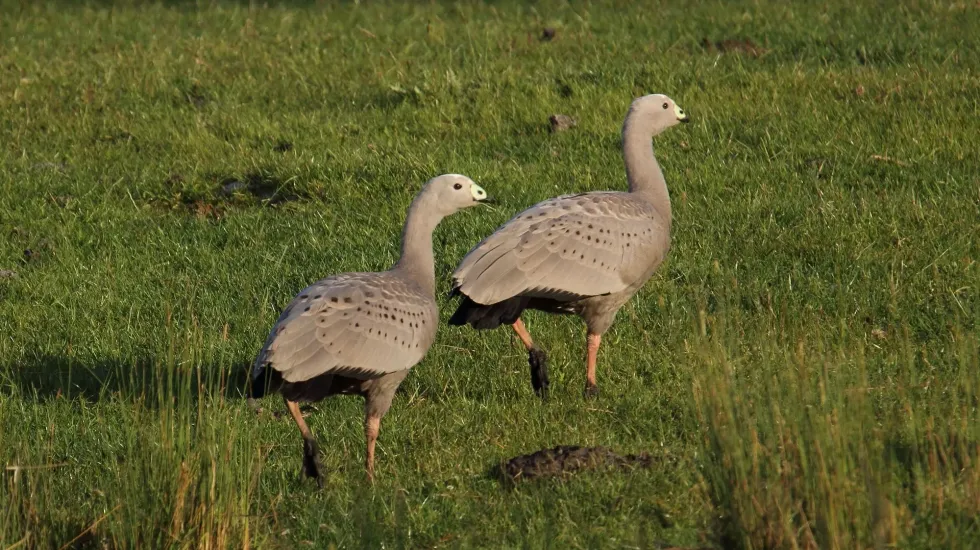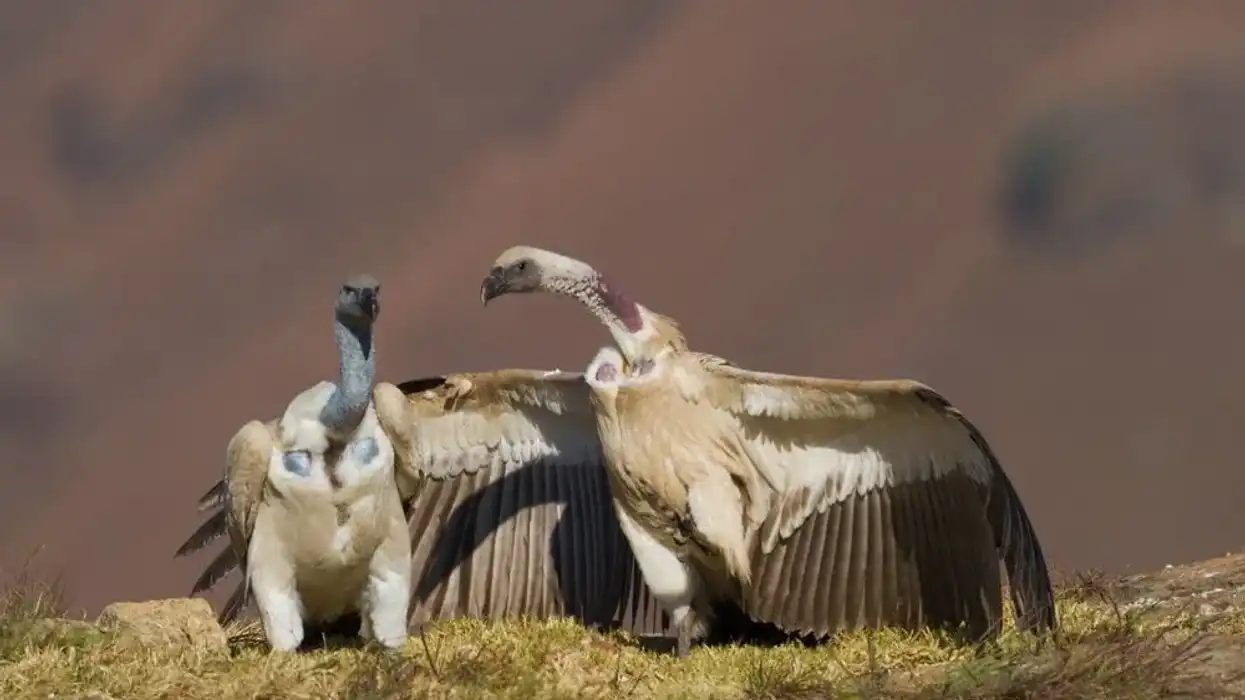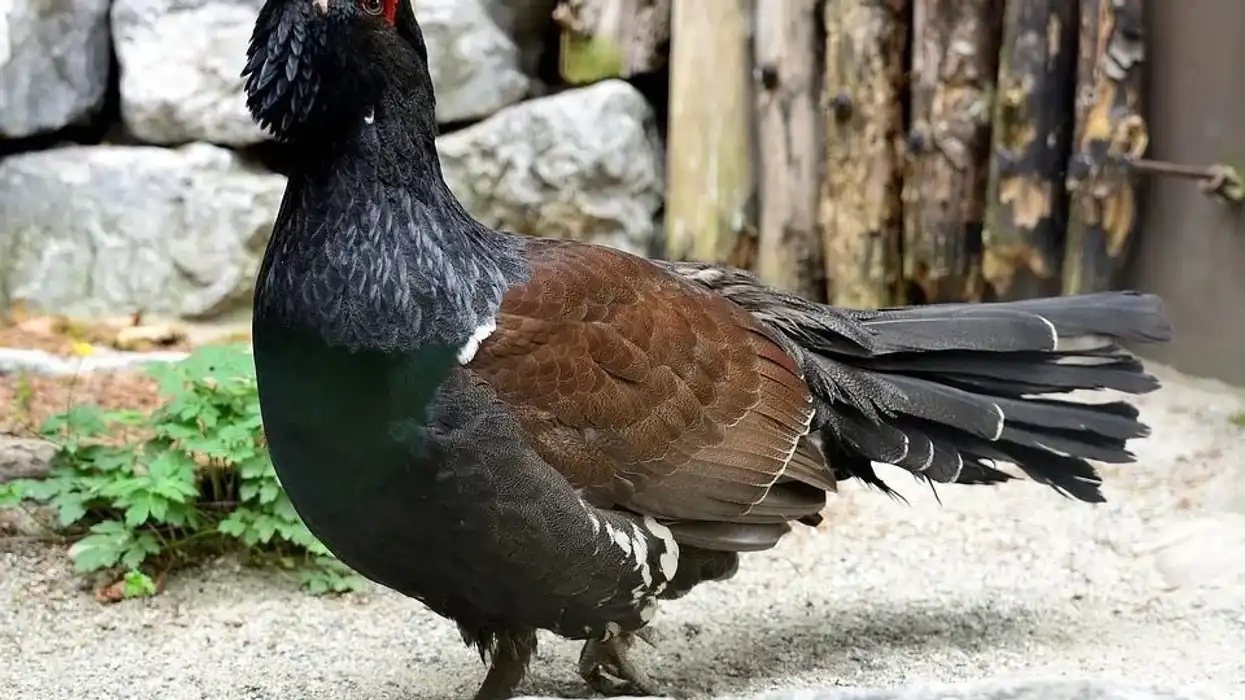The Cape Barren goose is a large goose species, found on the south-eastern coast of Australia, along with southern parts of Western Australia. These birds have been introduced to Kangaroo Island and a few other places.
The plumage of this goose is uniformly gray. However, they do have some black spots and black flight feathers. During the flight, it shows dark wing-tip feathers.
This bird is known to display strong-flying patterns. Being terrestrial in nature, its habitat mainly consists of grassy and scrubby areas.
It is a grazing bird and forages on clover and legumes, as well as spear grass. Male and female Cape Barren geese form monogamous pair bonds and are known to be strongly defensive of their territories. Though this goose species has a wide range, they are still considered to be one of the rarest in the world.
To know more about the Cape Barren goose, keep reading! You can also check out facts about the Emperor goose and greater white-fronted goose.
Cape Barren Goose Interesting Facts
What type of animal is a Cape Barren goose?
The Cape Barren goose (Cereopsis novaehollandiae) is a kind of edible goose, found in Australia. It is also known as the pig goose.
What class of animal does a Cape Barren goose belong to?
Like other birds, the Cape Barren goose is a part of the class Aves. It belongs to the Anatidae family, which consists of various species of geese, swans, and ducks.
How many Cape Barren geese are there in the world?
The population range of these birds is estimated to be in the range of 16,000-18,000 individuals. This would translate to a population of 11,000-12,000 adult Cape Barren geese.
Where does a Cape Barren goose live?
This bird is found on the south-eastern coast of Australia and southern parts of Western Australia. Barring the mainland, the range of the Cape Barren goose also consists of several islands nearby.
Additionally, this bird has been introduced to Kangaroo Island, Tasmania, and New Zealand. However, the population in New Zealand is very low and mostly consists of escaped or released birds.
Hence, these geese are considered to be native and endemic to Australia. Cape Barren geese are locally dispersive and are known to fly to mainland Australia from the islands when they are not breeding.
What is a Cape Barren goose's habitat?
The habitat of a Cape Barren goose is characterized by the scrubs and grassy areas of offshore islands. This bird is terrestrial in nature and mainly inhabits pastures, open grassland, and areas bordering wetlands. It is also known to be well-suited to both freshwater and brackish water, and hence, can remain on offshore islands all year round.
Who do Cape Barren geese live with?
These grazing birds are known to forage in flocks. There have been rare instances of flocks containing over 300 members, in the non-breeding season.
How long does a Cape Barren goose live?
The lifespan of a Cape Barren goose is marked as 17 years.
How do they reproduce?
Male and female Cape Barren geese are monogamous in nature and form pair bonds, which last for their lifetime. When the breeding and nesting season comes along, the pairs build their nests in loose colonies.
Each nest is made out of plant materials and lined with various grasses. The construction of the nest is done by the male, while the female bird participates in lining the nest. Courtship displays are carried out before copulation takes place.
After mating, the female lays four to five eggs, which are incubated by the mother. However, the babies are brooded by both parents.
What is their conservation status?
The conservation status of this bird has been marked as Least Concern by the International Union For Conservation Of Nature or IUCN. However, they are considered Vulnerable under the Australian Federal Conservation Status, as they are a very rare goose species.
The population of these geese declined to an alarming number in the 1950s, which led biologists to think these birds would become extinct. Fortunately, several conservation efforts and initiatives have brought their population up to a normal level, and they are no longer endangered.
Cape Barren Goose Fun Facts
What do Cape Barren geese look like?
The Cape Barren goose (Cereopsis novaehollandiae) has a unique appearance, even though its plumage is not that bright or catchy. Their entire body is covered in uniform pale gray feathers, with black spots on the wing coverts and scapular or shoulders.
The bill of this goose is short and black in appearance and is concealed by a greenish-yellow cere skin. The flight feathers are also gray but have black tips.
Its legs are pink or deep red, with black feet. The tail and tail covert feathers are all black, in contrast to the rest of the pale gray plumage.
During the flight, it shows dark wing-tip feathers. The young members of this species are mostly black and white in color, with a black mask.
Unlike adult geese, young goslings do not have the greenish-yellow cere skin on their bill. Additionally, contrary to the parents whose legs are pink, goslings have gray-green legs.

How cute are they?
The Cape Barren goose is certainly a very cute bird species, with its greenish-yellow bill. This bird is also considered to be one of the world's rarest geese, and that makes them all the more special.
How do they communicate?
Birds of this species mostly communicate with the help of calls and vocalizations. They are known to produce pig-like grunts, which has resulted in them being referred to as the pig goose as well. Males have been observed to produce much louder and higher-pitched trumpeting calls. These birds generally vocalize when they are alarmed, displaying, or while in flight.
How big is a Cape Barren goose?
The Cape Barren goose is quite a large species, with a noteworthy size. The length of this bird is between 29.5-39.3 in (75–100 cm). Besides that, their wingspan measures between 59-74.8 in (150-190 cm). In comparison to the nene goose, which has a body length range of 21-26 in (53-66 cm), the Cape Barren goose is certainly much larger.
How fast can a Cape Barren goose fly?
Though the exact flight speed of Cape Barren geese has not been recorded, they do have very strong flying patterns, due to their large wings. They have been observed flying using both fast and shallow beating of their wings. However, they do become temporarily flightless when their flight feathers are molting.
How much does a Cape Barren goose weigh?
Among these birds, males are larger than females, and therefore, weigh more. The weight of a male Cape Barren goose is between 6.9-11.2 lb (3170–5100 g), while that of a female is around 7 lb (3180 g). Both sexes are considerably heavier than the African pygmy goose, which weighs around 0.62 lb (281.2 g).
What are the male and female names of the species?
A male Cape Barren goose is known as a gander, while a female is known as a goose or sometimes, as a dame.
What would you call a baby Cape Barren goose?
A baby Cape Barren goose is known as a gosling.
What do they eat?
Cape Barren geese are herbivorous in nature and feed on a variety of plants. They most commonly eat the leaves, seeds, and stems of tussock grass (Poa poifornis), pasture grass like clover and legumes, as well as spear grass. These birds are known to graze on land, most commonly, during the daytime.
Are they dangerous?
Generally, these geese are not considered to be dangerous. However, during the breeding season, the pair bonds become highly territorial and can get aggressive if they feel like their territory and nest are under threat.
Would they make a good pet?
These birds have been known to do well in captivity, as long as their needs and requirements are met.
Did you know...
The name Cape Barren goose was given to this goose species, as they were first discovered in Cape Barren Island, which is located to the northeast of the Tasmanian Island in Australia. These birds migrate to neighboring mainland places during the summer.
How many eggs do Cape Barren geese lay?
The breeding season for these birds lasts from July to September. However, the monogamous pairs occupy their territory as early as February. The nesting is usually done in colonies, with a minimum space of 65.6 ft (20 m) between each nest.
Following successful breeding, the female lays four to five eggs, which are creamy-white in color. The eggs are incubated for 34-37 days before the goslings hatch out. Once the offspring are out, they are brooded by both parents.
Are Cape Barren geese aggressive?
The Cape Barren goose, one of the world's rarest goose species, can become very aggressive during the breeding season. They are known to be highly territorial and protective over their nesting sites.
These birds have been seen to aggressively run towards any intruder, like dogs, foxes, humans, and other geese, with their wings spread out, if they feel like their nest is under attack.
Here at Kidadl, we have carefully created lots of interesting family-friendly animal facts for everyone to discover! Learn more about some other birds from our Guam kingfisher facts and albatross interesting facts pages.
You can even occupy yourself at home by coloring in one of our free printable 3 bird houses coloring pages.
Main image by JJ Harrison.
Second image by Dominic Sherony.









